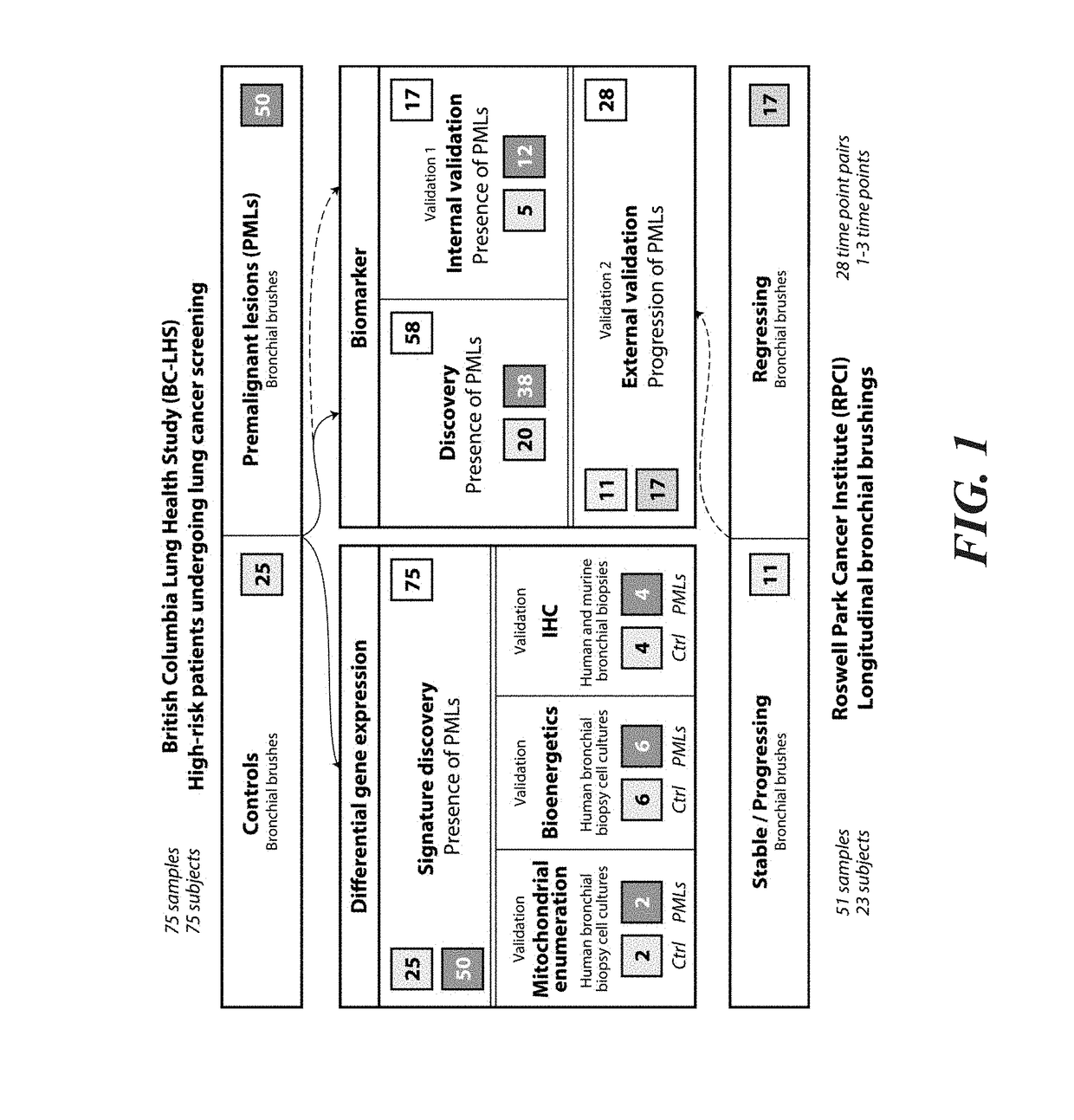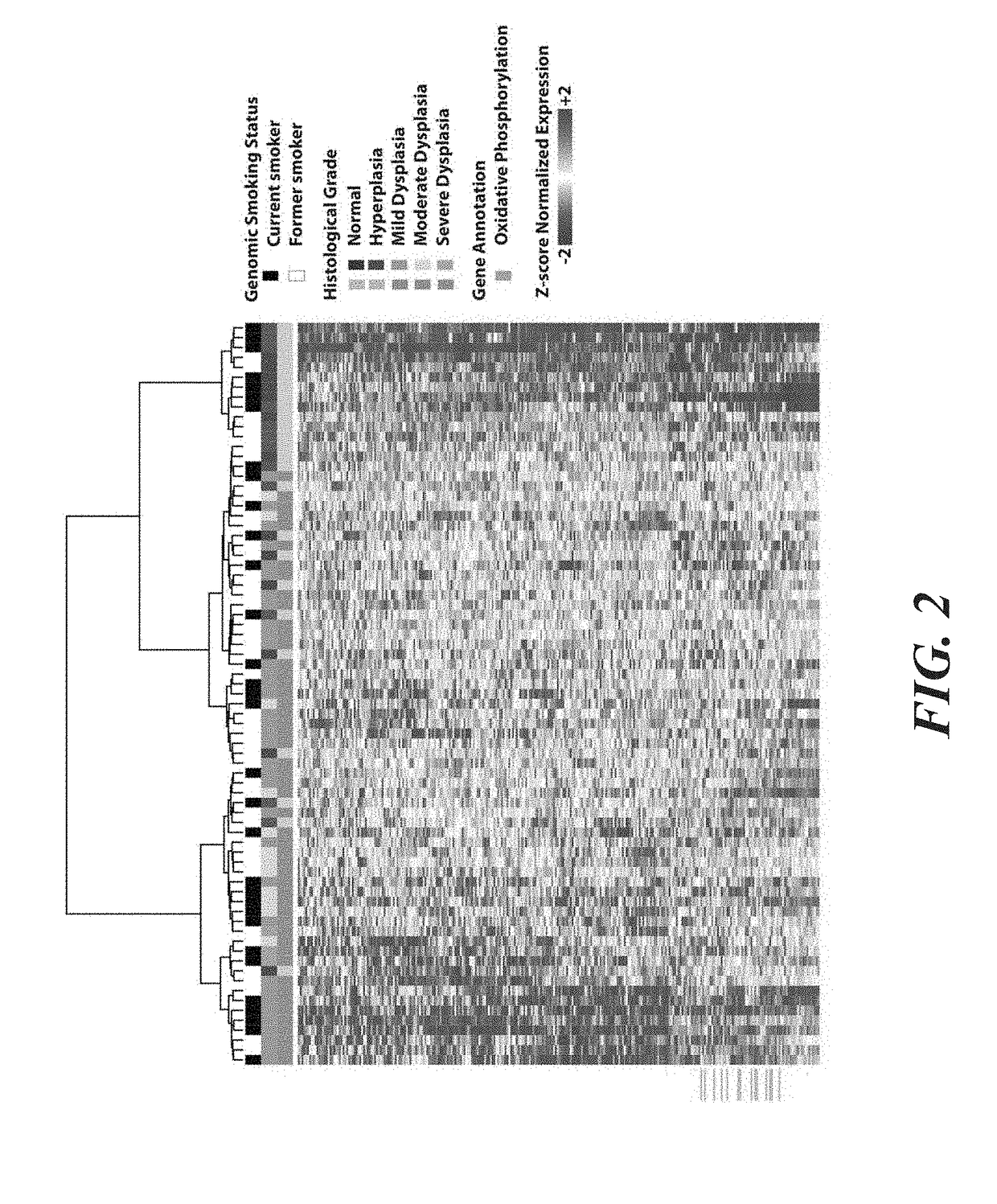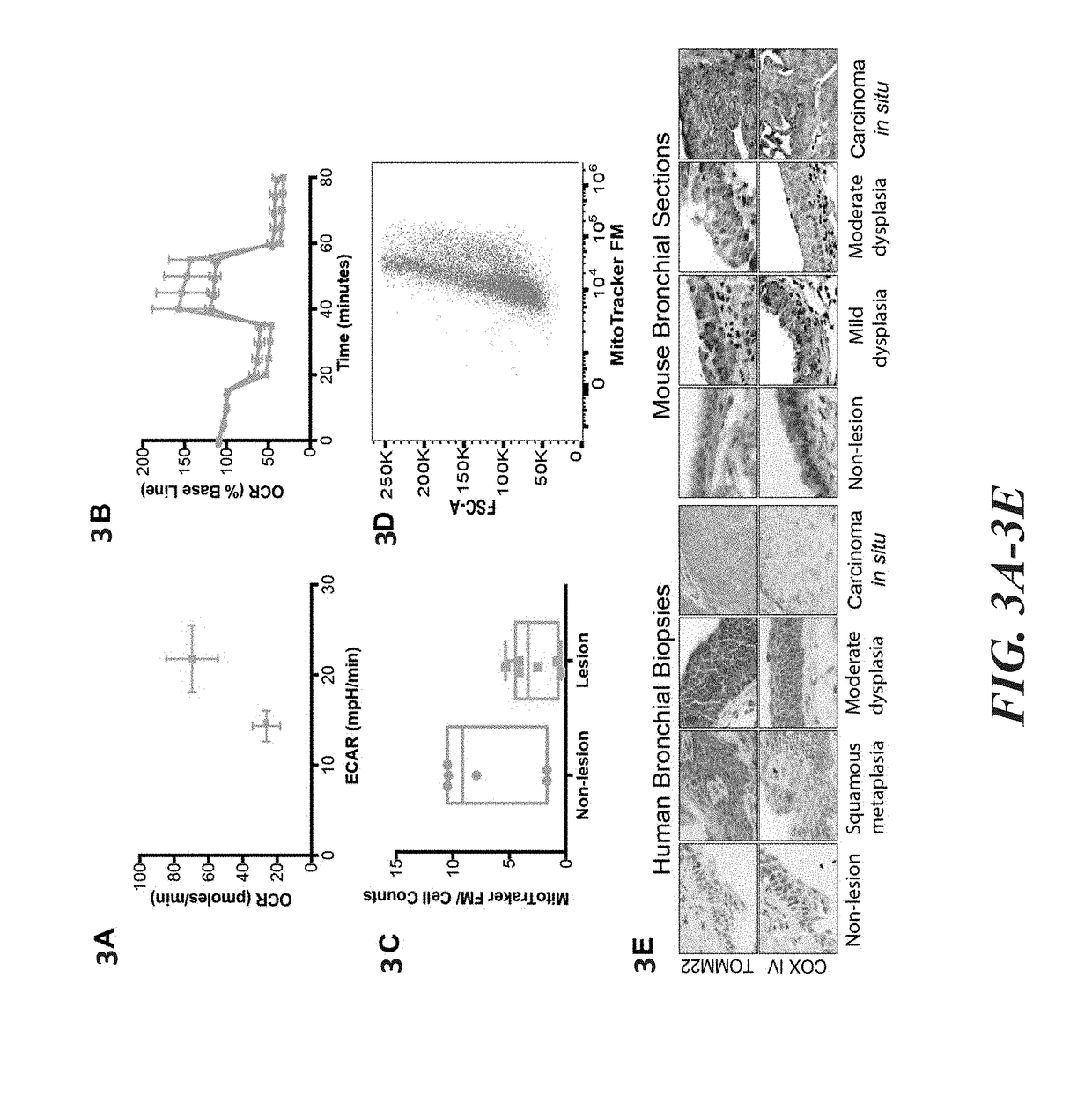Gene expression-based biomarker for the detection and monitoring of bronchial premalignant lesions
a gene expression and premalignant lesions technology, applied in biochemistry apparatus and processes, climate sustainability, ict adaptation, etc., can solve the problems of limited clinical use, inconvenient monitoring of pmls, and inability to identify pmls through molecular tests, etc., to facilitate the monitoring of pmls and their progression, facilitate clinical decision-making of treatment, and inform clinical trial recruitment efforts
- Summary
- Abstract
- Description
- Claims
- Application Information
AI Technical Summary
Benefits of technology
Problems solved by technology
Method used
Image
Examples
example 1
[0057]Bronchial airway brushings were obtained during autofluorescence bronchoscopy procedures between June 2000 and March 2011 from subjects in the British Columbia Lung Health Study at the British Columbia Cancer Agency (BCCA) (Vancouver, BC) (29) and between December 2009 and March 2013 from subjects in the High-Risk Lung Cancer-Screening Program at Roswell Park Cancer Institute (RPCI) (Buffalo, N.Y.) (detailed cohort information in the Methods section below). Premalignant Lesions were sampled (if present) using endobronchial biopsy, graded by a team of pathologists at BCCA or RPCI, and the worst histology observed was recorded. Bronchial brushes of normal-appearing epithelium from 84 BCCA subjects (1 brush per subject) with and without PMLs were selected to undergo mRNA-Seq while ensuring balanced clinical covariates. Fifty-one bronchial brushes of normal-appearing epithelium from 23 RPCI subjects were also profiled by mRNA-Seq (18 subjects had 2 procedures, an...
example 2
Results
Subject Population
[0066]The study design used 126 bronchial brushings obtained via autofluorescence bronchoscopy at the BCCA and RPCI for differential gene expression and pathway analysis, as well as for biomarker development and validation (FIG. 1). A dataset consisting of samples collected from BCCA subjects with (n=50) and without (n=25) PMLs (n=25) was used to derive a gene expression signature associated with the presence of dysplastic PMLs. Important clinical covariates such as COPD and reported smoking history as well as alignment statistics from the mRNA-Seq data were not significantly different between the two groups (Table 1 and Table 2). For biomarker development, the 75 BCCA samples were split by batch and used in biomarker discovery (n=58) and validation (n=17) (Tables S4 and S5). The change in biomarker score as a predictor of progression of PMLs was then tested in the 51 RPCI samples (Tables S5 and S6).
Transcriptomic Alterations in the Airway Field of Injury As...
PUM
| Property | Measurement | Unit |
|---|---|---|
| surface diameter | aaaaa | aaaaa |
| chest computed tomography | aaaaa | aaaaa |
| CT | aaaaa | aaaaa |
Abstract
Description
Claims
Application Information
 Login to View More
Login to View More - R&D
- Intellectual Property
- Life Sciences
- Materials
- Tech Scout
- Unparalleled Data Quality
- Higher Quality Content
- 60% Fewer Hallucinations
Browse by: Latest US Patents, China's latest patents, Technical Efficacy Thesaurus, Application Domain, Technology Topic, Popular Technical Reports.
© 2025 PatSnap. All rights reserved.Legal|Privacy policy|Modern Slavery Act Transparency Statement|Sitemap|About US| Contact US: help@patsnap.com



